SPODE Blue Italian Design C. 1816 8 Cups and 8 Saucers (16 pcs) Made in England
Posted on August 2, 2024 | By admin
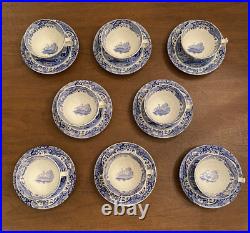
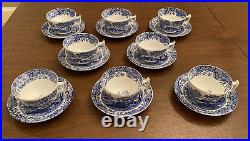
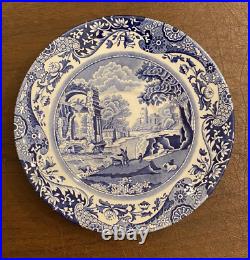
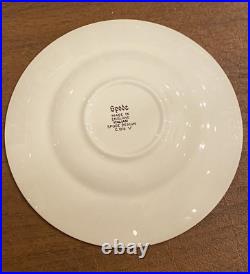
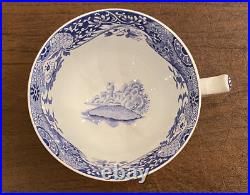
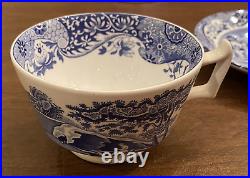
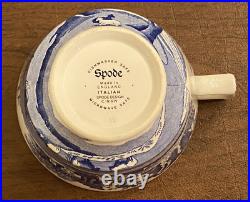

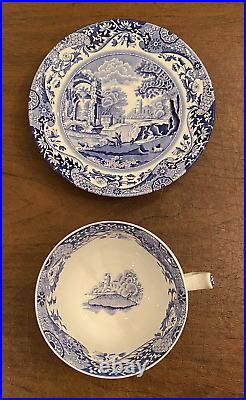
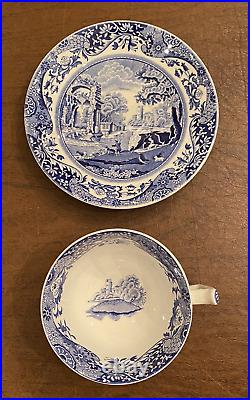
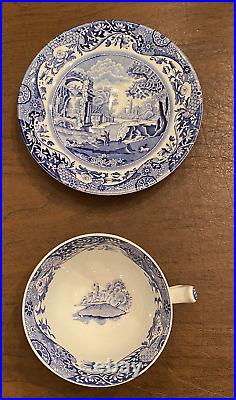
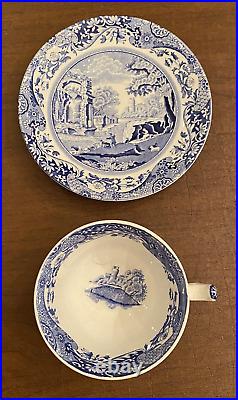
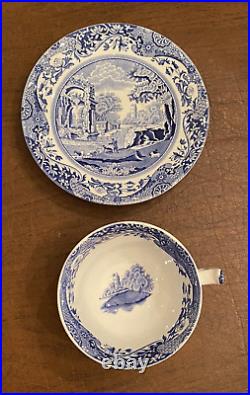
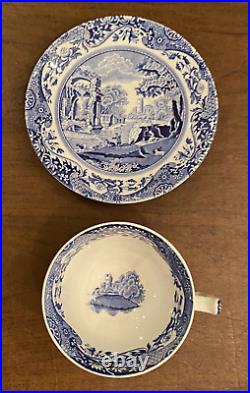
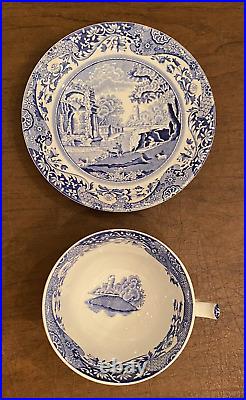
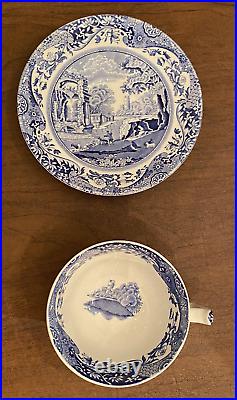
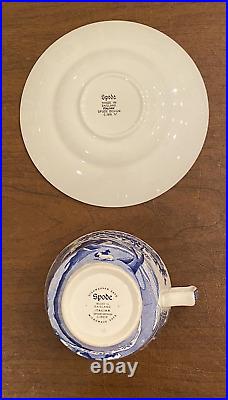
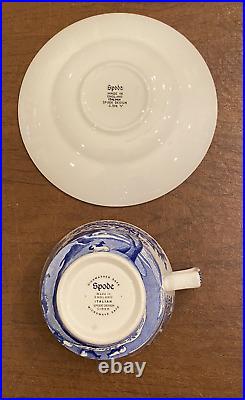
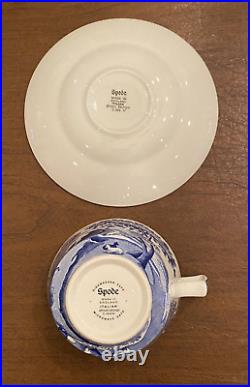
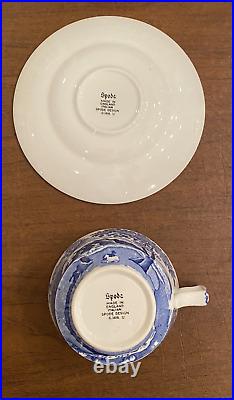
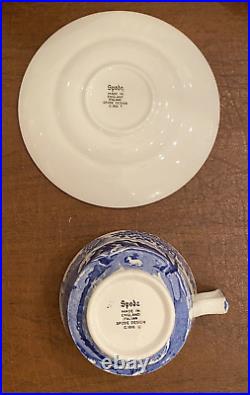
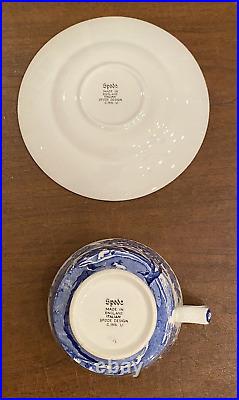
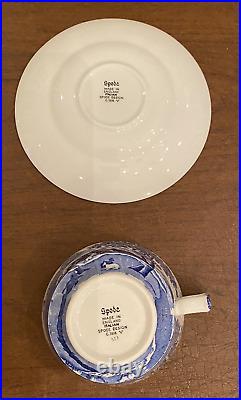
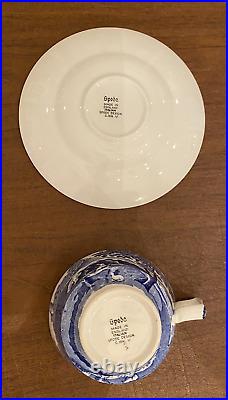

SPODE Blue Italian Design C. 1816 Eight (8) Tea Cups and Eight (8) Saucers (16 pieces) Made in England. This exquisite set of Spode Blue Italian Design cups and saucers is a must-have for any collector or lover of fine porcelain. Made in England, this set includes eight cups and eight saucers, each featuring a stunning blue and white pattern that is sure to impress. Perfect for all occasions, these cups and saucers are a great addition to any dinnerware collection or replacement pieces. The Spode brand is known for its quality and attention to detail, making this set a true gem. Whether you’re hosting an elegant dinner party or enjoying a casual cup of tea, this set is sure to impress your guests. Note: Stamps on bottom vary and indicate year/info. Interesting Spode history: Stamps on the bottom of the tea cups and saucers. Putting a date to your Spode pieces can be difficult. Here are some tips. Using the Spode archive. You can learn about the many different backstamps. (marks) on Spode pieces. This though can only be a guide to a date – it is not an exact science and some backstamps were used for many, many years. Learning about styles and shapes can also help date pieces, particularly on the older pieces from the early 1800s when many were not marked. Spode used hundreds of different styles of backstamps in its nearly 250 year history. Start of the Spode business to 1833. The company was known as Spode. Pieces were not always marked and sometimes just a pattern number appears and no Spode name at all. Painted marks are often in red and marks can also appear printed usually in blue or black, (although other colours were used) or impressed into the clay so appearing colourless. It is possible to have a combination of all three. Above is the image of a backstamp with the Spode name, the pattern number 967 and another small red cypher, which is a workman’s mark???????????? . The company was known as Copeland and Garrett. Marks appear with this name printed or impressed and often include’late Spode’. This means formerly Spode as the name continued to be used because the Spode brand had become so well-known. Above is an unusual backstamp which includes the name of the pottery body (ie recipe). You may also find pieces which are impressed Spode and then printed Copeland & Garrett. The undecorated pieces were already made and marked Spode prior to the name change in 1833. The company was owned outright by the Copeland family and a variation on Copeland or W. Copeland was used; again often in conjunction with the Spode name. To celebrate the supposed bicentenary of the founding of the company, the name reverted to Spode with a new logo designed by John Sutherland Hawes. This is the name used until the closure of the factory in 2009. A great help to dating wares from the late 1800s to 1963 is that there are often impressed marks on pieces which give you the month and the year. These are usually on flat pieces, for example on a saucer but not on a cup. They can look insignificant and be difficult to read but once you know what to look for then you can date a piece quite accurately. From 1870 to 1963 impressed datemarks were used – on earthenware from 1870 until 1957 and on bone china and fine stone from 1870 until 1963. These take the form of a letter over two numbers, for example J over 33, which would give you a date of January 1933. Remember other numbers and letters appear on pieces which are not datemarks so you have to be certain they appear as one letter above two numbers. See the comments below to learn how to read these more easily. The following gives the letter code for each month: J for January F for February M for March A for April Y for May U for June L for July T for August S for September O for October N for November D for December. Datemarks after 1963 until 1976 are indicated by a printed letter associated with particular backstamps and are a little complicated. There are several series of letters and a different letter is used to indicate the year depending on whether the body is bone china, fine stone or earthenware. To decipher these you and I! Would need Robert Copeland’s’marks book’ mentioned above. By 1976 the date letters were the same for bone china, fine stone and earthenware starting at A as follows: A to N for 1976 to 1989 No letter O was used P to W for 1990 to 1997 No letter X was used Y to Z for 1998 to 1999. In 2000 a new series of letters began. The year 2000 was given A0 (ie letter A number 0); 2001 was A1 etc until the close of the factory in 2009. An error is recorded for the fine stone body when the date letter was inadvertently omitted from the backstamps in 1981. This body was withdrawn in about 1993.
